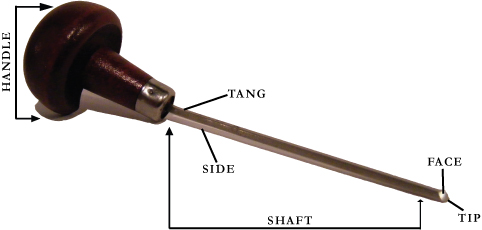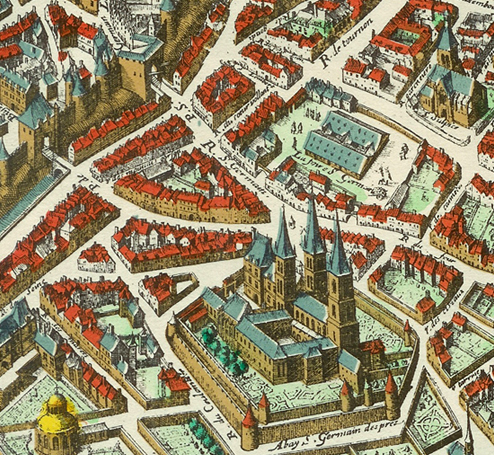|
Jollain (engravers)
Jollain (also spelled JolinBénézit 1976, vol. 6, p. 90. and Iollain) was the name of a family of French engravers and engraving publishers who lived and worked in the 17th and 18th centuries, mainly in Paris.Saur 2000, vol. 5, p. 340. Saur cites Thieme and Becker 1907–1950, vol 19, for all members of this family. Their engravings were often published under the name Chez Jollain (English: House of Jollain). The atelier Jollain was responsible for the first engraving of harpsichord music in France.Cypress 2007. Family members Gérard Jollain (first mentioned 1660, buried 28 May 1683) was a copper engraver. Bénézit gives his name as Gérard Jolin (or Jollain) and says he resided on the Rue Saint-Jacques in Paris under the shop sign ''Ville de Cologne'' and was the father of François-Gérard Jollain (next). François Jollain (ca. 1641 – 18 April 1704) was a copper engraver. Bénézit gives his name as François-Gérard Jolin (or Jollain) ''l'ainé'' (the elder) and says he w ... [...More Info...] [...Related Items...] OR: [Wikipedia] [Google] [Baidu] |
Atelier (art)
An atelier () is the private workshop or studio of a professional artist in the fine or decorative arts or an architect, where a principal master and a number of assistants, students, and apprentices can work together producing fine art or visual art released under the master's name or supervision. Ateliers were the standard vocational practice for European artists from the Middle Ages to the 19th century, and common elsewhere in the world. In medieval Europe this way of working and teaching was often enforced by local guild regulations, such as those of the painters' Guild of Saint Luke, and of other craft guilds. Apprentices usually began working on simple tasks when young, and after some years with increasing knowledge and expertise became journeymen, before possibly becoming masters themselves. This master-apprentice system was gradually replaced as the once powerful guilds declined, and the academy became a favored method of training. However, many professional artists ... [...More Info...] [...Related Items...] OR: [Wikipedia] [Google] [Baidu] |
Burin (engraving)
A burin ( ) is a steel cutting tool used in engraving, from the French ''burin'' (cold chisel). Its older English name and synonym is graver. Etymology The term ''burin'' refers to a tool used by engravers that has a thin, pointed blade and it used to etch or cut. The first known use of the word dates back to France in the mid-1600s when the term was coined for the tool we know today. Design The burin consists of a rounded handle shaped like a mushroom, and a tempered steel shaft, coming from the handle at an angle, and ending in a very sharp cutting face. The most ubiquitous types have a square or lozenge face, a high-end repertoire has many others. A tint burin consists of a square face with teeth, to create many fine, closely spaced lines. A stipple tool allows for the creation of fine dots. A flat burin consists of a rectangular face, and is used for cutting away large portions of material at a time. The earliest uses of a burin come from the Lower Paleolithic era, t ... [...More Info...] [...Related Items...] OR: [Wikipedia] [Google] [Baidu] |
Turkish Empire
The Ottoman Empire, * ; is an archaic version. The definite article forms and were synonymous * and el, Оθωμανική Αυτοκρατορία, Othōmanikē Avtokratoria, label=none * info page on book at Martin Luther University) // CITED: p. 36 (PDF p. 38/338) also known as the Turkish Empire, was an empire that controlled much of Southeast Europe, Western Asia, and Northern Africa between the 14th and early 20th centuries. It was founded at the end of the 13th century in northwestern Anatolia in the town of Söğüt (modern-day Bilecik Province) by the Turkoman tribal leader Osman I. After 1354, the Ottomans crossed into Europe and, with the conquest of the Balkans, the Ottoman beylik was transformed into a transcontinental empire. The Ottomans ended the Byzantine Empire with the conquest of Constantinople in 1453 by Mehmed the Conqueror. Under the reign of Suleiman the Magnificent, the Ottoman Empire marked the peak of its power and prosperity, as well as th ... [...More Info...] [...Related Items...] OR: [Wikipedia] [Google] [Baidu] |
Buda
Buda (; german: Ofen, sh-Latn-Cyrl, separator=" / ", Budim, Будим, Czech and sk, Budín, tr, Budin) was the historic capital of the Kingdom of Hungary and since 1873 has been the western part of the Hungarian capital Budapest, on the west bank of the Danube. Buda comprises a third of Budapest's total territory and is mostly wooded. Landmarks include Buda Castle, the Citadella, and the president of Hungary's residence, Sándor Palace. Etymology According to a legend recorded in chronicles from the Middle Ages, the name "Buda" comes from the name of Bleda ( hu, Buda), brother of Hunnic ruler Attila. Demographics The Buda fortress and palace were built by King Béla IV of Hungary in 1247, and were the nucleus around which the town of Buda was built, which soon gained great importance, and became in 1361 the capital of Hungary. While Pest was mostly Hungarian in the 15th century, Buda had a German majority; however according to the Hungarian Royal Treasury, ... [...More Info...] [...Related Items...] OR: [Wikipedia] [Google] [Baidu] |
Léon Bouthillier, Comte De Chavigny
Léon Bouthillier, comte de Chavigny (March 28, 1608 – October 11, 1652) was a Foreign Minister of France to Louis XIII. Life He was associated with his father, Claude Bouthillier, who took him to all major courts of Europe, tutoring in diplomacy, from 1629 to 1632. To differentiate Bouthillier father and son, Leo was called "The Younger". Léon's brother Victor became archbishop of Tours. On March 18, 1632, he was appointed Secretary of State for Foreign Affairs. In 1635, he signed a treaty of alliance with Holland and Sweden. He acts as messenger between Gaston d'Orleans and the government. He is also a friend of Mazarin, but their friendship does not survive the period of the regency. After the death of Louis XIII, he relinquished his office June 23, 1643 but he was sent as plenipotentiary in the negotiations of Munster. Returning to France, he intrigued against Mazarin and approaches the Prince of Conde. He was arrested twice during the Fronde. In October 1652, j ... [...More Info...] [...Related Items...] OR: [Wikipedia] [Google] [Baidu] |
Siege Of Barcelona (1713–1714)
The siege of Barcelona ( ca, Setge de Barcelona, ) was a thirteen month battle at the end of the War of Spanish Succession, which pitted Archduke Charles of Austria (backed by Great Britain and the Netherlands, i.e. the Grand Alliance) against Philip V of Spain, backed by France in a contest for the Spanish crown. Prelude At the end of the century, after the death of the childless Charles II (1700), the Crown of Spain went to his chosen successor, Philip V of the House of Bourbon. The Grand Alliance of Austria, England and the Dutch Republic gave military support to a Habsburg claimant of the crown, Archduke Charles as Charles III of Spain, resulting in the War of the Spanish Succession (1701–14). The Principality of Catalonia initially accepted Philip V following prolonged negotiations between Philip V and the Catalan Courts (the parliament). However, repressive mesures of the viceroy Francisco de Velasco and authoritarian decisions of the king (some of them contrary to Ca ... [...More Info...] [...Related Items...] OR: [Wikipedia] [Google] [Baidu] |
Théâtre De La Foire
Théâtre de la foire is the collective name given to the theatre put on at the annual fairs at Abbey of Saint-Germain-des-Prés, Saint-Germain and Saint-Laurent church, Paris, Saint-Laurent (and for a time, at Saint-Ovide) in Paris. Foire Saint-Germain The earliest references to the annual fair date to 1176. The fairground itself was established in 1482 by Louis XI for the benefit of the Abbey of Saint-Germain-des-Prés and was located near the Abbey on the Rive Gauche, Left Bank southwest of the city center just outside one of the gates of the Wall of Philip II Augustus, Paris, city wall built by Philip II at the beginning of the 13th century. The covered Saint-Germain market today occupies part of the former fairground site with access from the Boulevard Saint-Germain via the Rue de Montfaucon satellite view. The fair generally lasted three to five weeks around Easter. During the 18th century it consistently opened on 3 February and lasted until Palm Sunday. The fair's first a ... [...More Info...] [...Related Items...] OR: [Wikipedia] [Google] [Baidu] |
Vita Et Miracula Christi By Gerard Jollain
Vita or VITA (plural vitae) is Latin for "life", and may refer to: * ''Vita'', the usual start to the title of a biography in Latin, by which (in a known context) the work is often referred to; frequently of a saint, then called hagiography * Vita (brand), a beverage in Hong Kong * A curriculum vitae, a written overview of a person's experience and other qualifications for a job * Opel Vita, a car made by Opel * PlayStation Vita, a handheld game console by Sony * VITA, acronym for Views, Inventory, Transformation and Artefacts * VITA, acronym for Virginia Information Technologies Agency * VITA, the IRS Volunteer Income Tax Assistance Program * VITA, VMEbus International Trade Association * Beta (letter) a.k.a. Vita (β), the second letter of the Greek alphabet * '' Vita: Life in a Zone of Social Abandonment'', an ethnographic study by João Biehl * Vita (given name), the name. People Given name *Vita (rapper) (born 1976), stage name of American rapper *Vita Anda Tērauda (born 1962 ... [...More Info...] [...Related Items...] OR: [Wikipedia] [Google] [Baidu] |
Hans Vollmer
Hans Vollmer (16 November 1878 – 15 February 1969) was a German art historian. Life His father was the architect (1845-1920), his grandfather of the Hamburg marine painter and sculptor Adolph Friedrich Vollmer (1806–1875). He was the older brother of the painter and sculptor Erwin Vollmer (1884–1973). Vollmer studied art history, history of sciences and philosophy in Berlin and Munich. In 1906 he was awarded a doctorate by Heinrich Wölfflin in Berlin with a thesis on ''Schwäbische Monumentalbrunnen von der Gotik bis zum Klassizismus'' (Swabian monumental fountains from the Gothic to the Classicism). Since April 1, 1907 he was employed in the editorial office of the '' Thieme-Becker ''Allgemeiner Künstlerlexikon'' at the publishing house E. A. Seemann in Leipzig, in 1923 he took over the editorial management and became editor of the Thieme-Becker company. He worked as the main contributor, supported by a small editorial staff, until the completion of the 37-volume wo ... [...More Info...] [...Related Items...] OR: [Wikipedia] [Google] [Baidu] |
French Engravers
French (french: français(e), link=no) may refer to: * Something of, from, or related to France ** French language, which originated in France, and its various dialects and accents ** French people, a nation and ethnic group identified with France ** French cuisine, cooking traditions and practices Fortnite French places Arts and media * The French (band), a British rock band * "French" (episode), a live-action episode of ''The Super Mario Bros. Super Show!'' * ''Française'' (film), 2008 * French Stewart (born 1964), American actor Other uses * French (surname), a surname (including a list of people with the name) * French (tunic), a particular type of military jacket or tunic used in the Russian Empire and Soviet Union * French's, an American brand of mustard condiment * French catheter scale, a unit of measurement of diameter * French Defence, a chess opening * French kiss, a type of kiss involving the tongue See also * France (other) * Franch, a surname * French ... [...More Info...] [...Related Items...] OR: [Wikipedia] [Google] [Baidu] |




